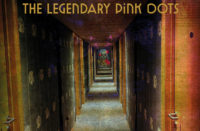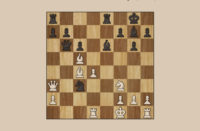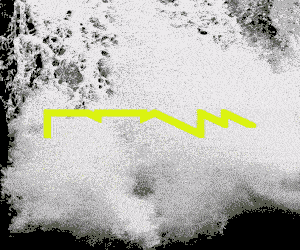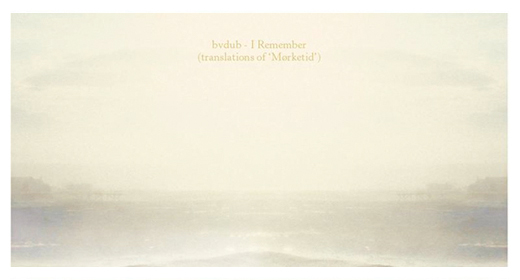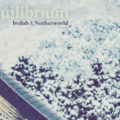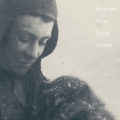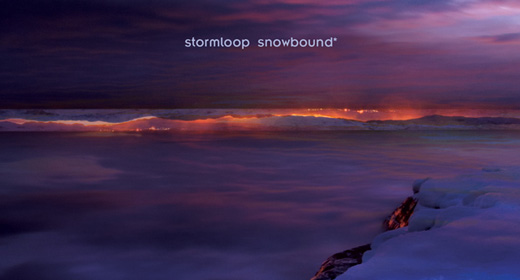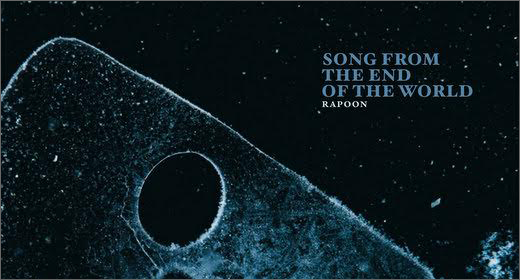Predominantly beatless tracks consisting of recursive delicate motifs, lilting chord progressions build to soft climax in surges of layered and looped fragments: strings, vocals, piano, acoustic guitar, and ethereal femme vox cohere and cluster in a cumulative swirl; prevailing outlook light and fluffy, with dark-edged clouds forming (don’t fret, they’ll soon clear)…

[Listen | Purchase] Devotees of Brock Van Wey’s recent output under his own name and his bvdub alias may ready themselves for swooning again. Followers of the sonic aesthetic established by Alessandro Tedeschi, Glacial Movements’ prime mover, however, should prepare for disappointment. In the artist’s discography, this new release departs little from immediate precursors, but in terms of the label’s in-house style, it is notably, jarringly, incongruent. The Art of Dying Alone may be a meditation on a theme of isolation and existential angst, but it is far removed from the intensity of GM’s back catalogue of long dark stares into the void from Netherworld, Rapoon, Lull, Francisco Lòpez, or the desolate dream projections of Skare, Oophoi, and Aquadorsa.
So, what’s with this GM modified food?
Van Wey propounds a proven, admittedly popular, formula. Predominantly beatless tracks consisting of recursive delicate motifs, lilting chord progressions build to soft climax in surges of layered and looped fragments: strings, vocals, piano, acoustic guitar, and ethereal femme vox cohere and cluster in a cumulative swirl; prevailing outlook light and fluffy, with dark-edged clouds forming (don’t fret, they’ll soon clear); track titles almost parodically emo: “No More Reasons Not to Fall,” “I Knew Happiness Once.” So it goes. The Man from California brings with him an overegged pudding of a style, not so much Ambient as Emo-bient; unkind perhaps but apt in tagging van Wey’s prevailing mope-binge tendencies, last sighted on White Clouds Drift On And On, a work whose release was attended by reflections on a recent past of personal existential crisis , disillusion and withdrawal, solitude and eventual resurgence. Presumably it’s these themes still being pored over here – the artist in prolonged meditations on issues of Self-in-the-world, etc. This would attribute meaning to these minimal loop strands, threading into denser textures, soft pads, twinkling cadences and chorales in endless waves, till motion turns to still. He has spoken elsewhere (ref. RA interview) of imagined utopias, so these may be what the bvdub vocabulary – much of it acquired from Kompakt’s original contributors, Voigt, Guentner, Lohmann, Dettinger – is seeking to voice with its dully articulate lulling pianos, fluffy cloud synths, tastefully plucked guitars, and celestial warbling in excelsis.
So what’s the fly in the ointment of paradise? Those titles (“Wish I Was Here”?) should already have alarm bells ringing, even before the music starts. The appeal of the elegiac, the downturned, in music is undeniable, but van Wey’s miserabilist progressions present themselves self-consciously boo-hoo, doe-eyed cutely forlorn, like he put the Bambi in Ambient; any tension is rendered limp by foreshadowing of a facile resolution, doubtless some sort of signifier of a will-to-‘closure’ (the Californian may have got out of California, but not vice versa), every sad cadence trailing a tinkling harp to dispel any threat of desolation.
So, The Art of Dying Alone sits conspicuously in the GM stable, given its prior record of more mediated forms of isolationist expression. Cloying and lachrymose inclinations leave the listener uneasily queasily a-swim; an Ocean of Sound, perhaps, but one whose main constituents are syrup and tears. Sonically, some have seen it as sailing close to a series of go-to referents (bring out your Eno, Gas, Marsen Jules, Tim Hecker, Simon Scott et al.). True, the likes of “No More Reasons Not To Fall” and “No One Will Ever Find You Here” (audio clip below) are replete with crowd-pleasing Pop Ambient tropes. But it’s the distinctive features of the above, rather than commonalities, that are central. This is unique to each, and, crucially, what makes bvdub bvdubby is a wilting anodyne mawkish sprawl, whose parts, summed, amount to no transportive whole. Its effect – and affect – may be recognisable, but hard to feel. For, at best, say on “To Finally Forget it all,” the indulgences of the flat-on-back languish or maudlin mope are tarnished by enervation, by a sense of being carried along by drip-dry drones and hand-me-down tones on some kind of candy floss-draped couch to a slowed down trance-tune with the limp 4-to-the-floor kick of a fainting heartbeat. And, what’s more, this final drawn out infinitude of silken swirl comes on top of a preceding hour-long unfurl. And finally, the emotional investment required if The Art? is bought into has as pay-off a state of melanch-oholic stupor.
If that’s what you want, seduction is simple, as a slew of reviews will attest . But you won’t find alluring and idiosyncratic sound exploration here, and Glacial Movements’ conversion to the wan whey that is the One Way of van Wey is, frankly, perplexing.
The Art of Dying Alone is out now on Glacial Movements. [Listen | Purchase]
[audio:http://igloomag.com/wp/wp-content/uploads/2010/12/bvdub-no_one_will_ever_find_you_here-dps.mp3|titles=”No One Will Ever Find You Here”]






